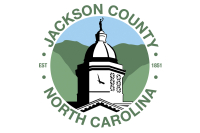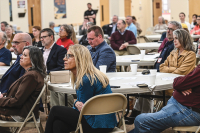It’s not about the trees at all
I really don’t think we are as stupid as they think we are. Developers of commercial retail shopping centers have an unfounded hang up about planting trees in front of, or in the parking lot of, shopping centers being developed. Or in the case of the Ingles on Russ Avenue in Waynesville, incorporating the use of trees into the plans for a 16,000-square-foot proposed expansion.
The biggest argument by Ingles against planting trees in the acres of parking that currently exist on Barber Boulevard is that any trees planted would hide the store from the grocery shopping public. Oh, come on, how stupid do you think the grocery shopping public is ... OK, no fair looking into someone else’s shopping cart.
“Honey, if you see a grocery store we need to stop. Slow down, watch out for that chunk of concrete in front of that McDonalds. Look, there’s a big Ingles sign. Say ... cantaloupes 3 for $2.99, that’s not bad. Do you think there’s a store up there?”
“Gee, I don’t know, all I see is a bunch of trees. Maybe it’s a park or something. Get out your map — I didn’t think we were that close to Joyce Kilmer. Let’s check it out anyway maybe its some sort of natural attraction.”
Please, the American consumer is not that stupid. Build a Wal-Mart at the bottom of the Grand Canyon and we would beat a path to it. A few trees in a store’s parking lot are not going to alienate customers, but instead build customer appreciation and possible consumer loyalty.
Here’s the problem. Ingles isn’t the bad guy here, they’re just following the status quo. The reality is that few to any developers ever include trees or landscaping in their designs unless they absolutely have to. If they do, it’s because a town has an ordinance that requires them to do so.
Related Items
The developers of the old Dayco property on the west end of Haywood County used the same argument when presenting their plan to develop the site to house a Home Depot and Wal-Mart Super Store. The town of Waynesville wanted more trees and landscaping to soften the buildings and break up the acres of parking proposed for the site, the developer pulled out the same old tired script and gave excuses why it couldn’t be done.
The same arguments are regurgitated each time a developer stands before a town planning board: the trees will hide the stores, trees and landscaping will take up valuable parking spaces, trees are messy — and my favorite — trees will cause a safety issue as “villains” will hide behind them and jump on unsuspecting shoppers.
I find it ironic that a representative of a major grocery chain would use the safety argument when one of his grocery stores in Haywood County employs a private security firm to patrol the store to keep customers safe from “villains,” and there isn’t even a single tree in that store’s parking lot.
One only has to look at downtown Waynesville and Sylva to see where the addition of a few street trees — with minimal loss of parking — has contributed to the rejuvenation of the downtown area of both these communities. It is well known fact that one of the first steps in revitalizing a downtown area is designing a streetscape that includes trees and planting areas to create a more pedestrian-friendly environment.
Why can’t the same hold true for large retailers away from the downtown area? I believe it was a Waynesville alderman that said, once we leave our car, we are all pedestrians. So why can’t developers create a pedestrian friendly environment in the vast parking lots of their mega stores — even if the shoppers are only walking 75 to 100 feet from their car to the store entrance.
Another unfounded argument heard from developers is that the general public doesn’t care about trees or landscaping, all they are interested in is low prices. Well, that’s just wrong, the public does care — just watch where they park.
If you study parking lots like I do (I spend a lot of time waiting in the car while my wife and daughters shop), you will observe that the most popular and sought-out parking places are near and around trees. Again, any fool will tell you, getting into a car that is parked in the shade of a tree is a lot more pleasant that getting into a car that has been parked in the broiling sun.
In all the news reports I have read as to why developers are hesitant to include landscaping and trees in designs for new projects, it’s what’s not said that’s the most telling. Not once have I heard them mention the cost — and because we are not stupid, we know that it’s the bottom line that really matters. The addition of trees and landscaping to a project cost money, so why do it if you don’t have to.
The cookie cutter approach to development also contributes to the negative mindset developers have to incorporating trees and landscaping in their designs. Most of the stores in question — Ingles, Wal-Mart, Lowes, Home Depot — pretty much follow the same design. Any changes to the plan to comply with local building and landscape ordinances and the cost of the project goes up.
So, it’s not the trees, it’s the money, stupid. Despite the arguments of developers, I would like to think the general public is smarter than given credit. We can see the grocery store through the trees. We are only stupid if we let them talk their way out of doing what’s right for the community.
(When he is not looking in other people’s shopping carts, David Curtis teaches middle school in Haywood County. He can be reached at This email address is being protected from spambots. You need JavaScript enabled to view it.)









